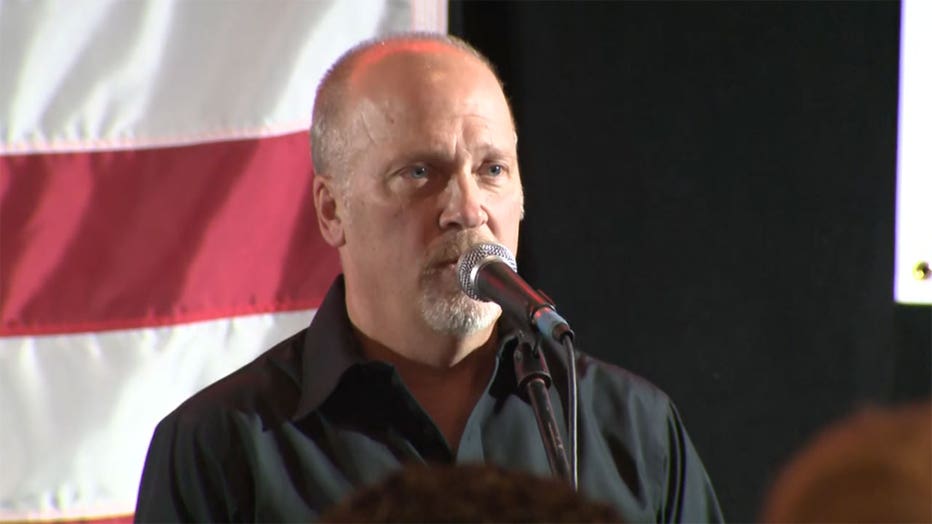Analyzing Voter Turnout In Florida And Wisconsin: Understanding The Shifting Political Tides

Table of Contents
Demographic Shifts and Voter Turnout in Florida and Wisconsin
Understanding the demographic makeup of Florida and Wisconsin is key to analyzing voter turnout trends. Significant shifts in age, race, and ethnicity directly impact voter participation rates.
Age and Voter Participation
Age is a significant predictor of voter turnout. Generally, older voters (65+) demonstrate higher participation rates than younger voters (18-29).
- Florida: Data from the U.S. Census Bureau consistently shows a higher percentage of registered voters among older Floridians compared to younger generations. This is often attributed to higher levels of political engagement and established voting habits.
- Wisconsin: Similar trends are observed in Wisconsin, where older voters exhibit significantly higher turnout rates. However, recent efforts to increase youth voter registration and participation are showing some positive effects.
The reasons for the disparity are complex:
- Political Engagement: Older generations often have a stronger sense of civic duty and a longer history of political engagement.
- Access to Information: Younger voters may have less access to reliable political information or lack the knowledge to navigate the voting process effectively.
- Life Stage: Younger voters may be more mobile, facing challenges with voter registration and absentee voting.
Further research is needed to fully understand the relationship between age and voter turnout in Florida and Wisconsin, accounting for socioeconomic factors and political socialization.
Racial and Ethnic Diversity and Voter Turnout
Racial and ethnic diversity significantly shapes voting patterns in both states.
- Florida: Florida's diverse population includes large Hispanic and African American communities. Voter turnout within these communities varies, often influenced by factors such as language barriers, limited access to polling places, and historical disenfranchisement.
- Wisconsin: Wisconsin's demographic landscape is changing, with increasing diversity in urban areas. However, achieving equitable voter turnout across all racial and ethnic groups remains a challenge.
Barriers to participation include:
- Language Barriers: Limited English proficiency can hinder access to information about candidates, voting procedures, and voter registration.
- Access to Polling Places: In certain communities, limited access to transportation or geographically inconvenient polling places can discourage voting.
- Voter Suppression Efforts: Historically, discriminatory practices have suppressed voter participation among minority groups. Continued vigilance is necessary to address ongoing challenges.
Impact of Electoral Reforms on Voter Turnout
Electoral reforms significantly influence voter turnout. Understanding these reforms in Florida and Wisconsin is essential for analyzing participation trends.
Early Voting and Absentee Voting
Early voting and absentee voting options are increasingly popular, offering greater flexibility for voters.
- Florida: Florida has expanded early voting opportunities, leading to increased participation. The ease of absentee voting has also had a positive impact.
- Wisconsin: Wisconsin also offers early and absentee voting, but the accessibility and regulations surrounding these methods may vary. Stricter rules could potentially impact turnout.
The impact of these reforms is evident in participation rates:
- Increased Convenience: Early and absentee voting cater to voters with busy schedules or mobility challenges.
- Improved Accessibility: These methods can be especially beneficial for specific demographics, such as older adults or individuals with disabilities.
Voter ID Laws and Registration Processes
Voter ID laws and registration processes can significantly impact voter turnout, particularly for certain demographics.
- Florida: Florida's voter ID laws have been subject to legal challenges. The complexity of the requirements can create barriers for some voters.
- Wisconsin: Wisconsin has also implemented voter ID laws, leading to debates over their potential impact on participation.
These regulations can present challenges:
- Access to Identification: Obtaining necessary identification can be difficult or costly for some individuals, especially low-income citizens.
- Disenfranchisement: Stricter ID requirements can disenfranchise eligible voters, particularly those from marginalized communities.
Campaign Strategies and Mobilization Efforts
Campaign strategies and mobilization efforts play a crucial role in shaping voter turnout. Effective mobilization can significantly increase participation, while ineffective strategies may lead to lower turnout.
Ground Game and Get-Out-The-Vote (GOTV) Campaigns
The "ground game" – grassroots organizing, canvassing, and direct voter contact – remains a vital element of successful campaigns.
- Florida: Both major parties invest heavily in GOTV efforts in Florida, recognizing its importance in close elections.
- Wisconsin: Similarly, Wisconsin campaigns utilize various ground game strategies to reach potential voters.
Successful GOTV strategies include:
- Targeted Outreach: Identifying and contacting likely voters based on demographic data and past voting behavior.
- Volunteer Mobilization: Engaging volunteers to assist in canvassing, phone banking, and voter registration drives.
- Digital Outreach: Leveraging social media and online platforms to reach voters.
Media Coverage and Public Discourse
Media coverage and public discourse significantly shape voter perceptions and motivation.
- Florida: Florida's media landscape is diverse, with a mix of national and local news outlets, influencing public opinion and shaping electoral narratives.
- Wisconsin: Wisconsin's media environment also influences voter attitudes and participation, although the impact may vary across different communities.
The impact of media can be:
- Increased Awareness: Media coverage can raise awareness of candidates, issues, and voting procedures.
- Framing of Issues: The way media frames political issues can influence voter preferences and participation.
- Voter Turnout: Negative or biased coverage could potentially decrease voter turnout.
Conclusion
This analysis of voter turnout in Florida and Wisconsin highlights the interplay of demographic shifts, electoral reforms, and campaign strategies in shaping voter participation. Understanding these factors is crucial for predicting future election outcomes and promoting greater civic engagement. Voter turnout in Florida and Wisconsin, like in other states, is a complex issue affected by a multitude of interacting variables. Further research on voter turnout in Florida and Wisconsin is essential to develop effective strategies for increasing participation and strengthening democratic processes. By analyzing the data and understanding the underlying trends affecting voter turnout in Florida and Wisconsin, we can work towards a more representative and engaged electorate.

Featured Posts
-
 Ukraine Conflict Swiss President Calls For Immediate Peace Denounces Russian Aggression
May 02, 2025
Ukraine Conflict Swiss President Calls For Immediate Peace Denounces Russian Aggression
May 02, 2025 -
 The Future Of Family Planning Over The Counter Birth Control And Post Roe Healthcare
May 02, 2025
The Future Of Family Planning Over The Counter Birth Control And Post Roe Healthcare
May 02, 2025 -
 Authentic Crab Stuffed Shrimp In Lobster Sauce Recipe
May 02, 2025
Authentic Crab Stuffed Shrimp In Lobster Sauce Recipe
May 02, 2025 -
 Cadeau Gourmand Une Boulangerie Normande Recompense Le Premier Bebe De L Annee
May 02, 2025
Cadeau Gourmand Une Boulangerie Normande Recompense Le Premier Bebe De L Annee
May 02, 2025 -
 100 Year Old Dalla Actress Priscilla Pointer Passes Away
May 02, 2025
100 Year Old Dalla Actress Priscilla Pointer Passes Away
May 02, 2025
